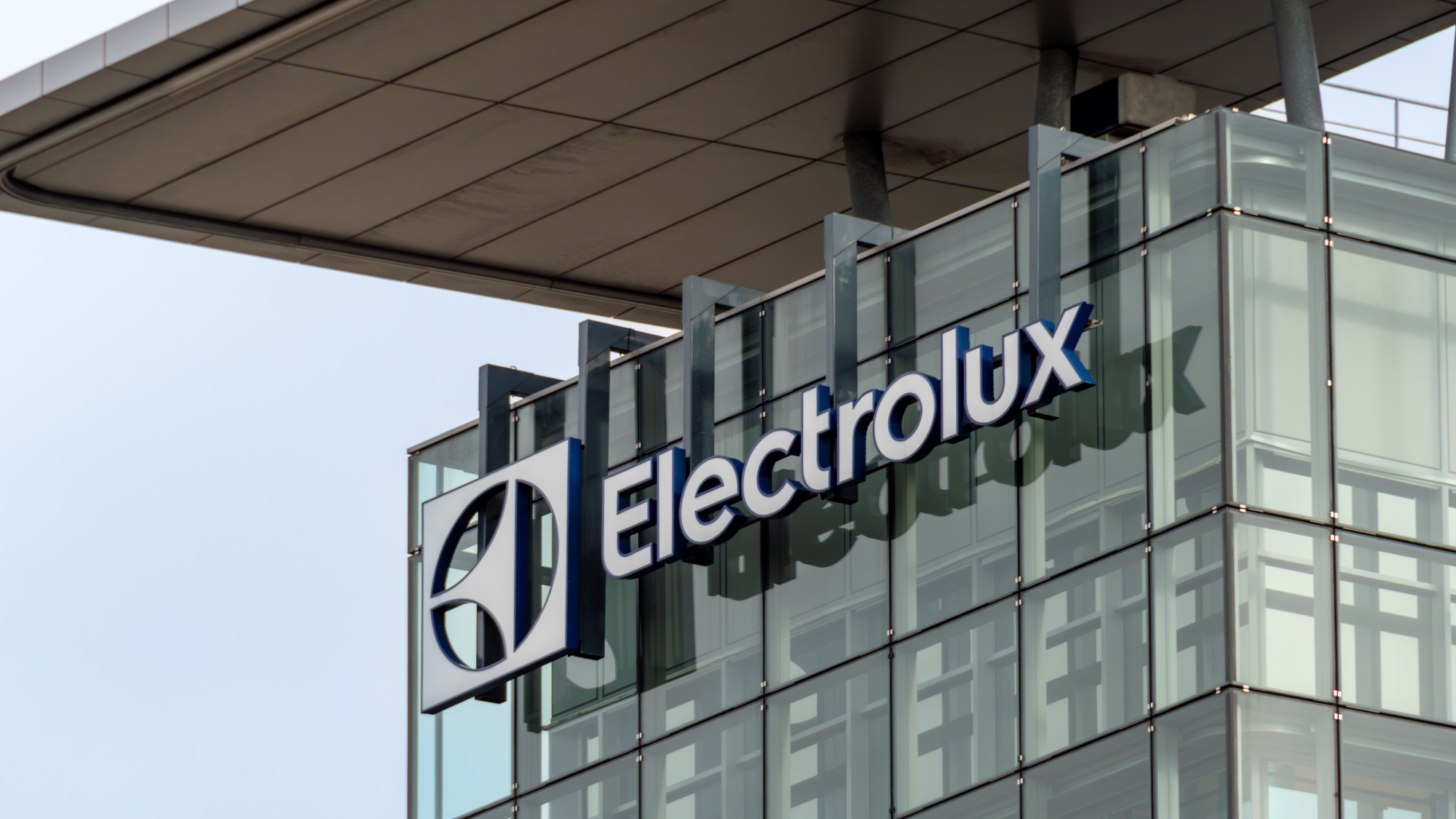Energy Efficiency, Industrial, Finance - September 20, 2024
Electrolux Group Drives Climate Action through the Green Financing Framework and Long-term Incentive Program
Electrolux Group manufactures a full range of home appliance products under the Electrolux and Frigidaire brands. With three manufacturing plants, three research and development centers, 11 distribution centers, and over 6,000 employees in the United States, Electrolux Group is strongly committed to driving sustainability throughout its operations. To achieve its sustainability goals, the organization developed two key practices: the Green Financing Framework and the Long-term Incentive Program (LTI). Since implementation, the practices have spurred cultural change and lessened the organization's environmental footprint, with an estimated 95% reduction in natural gas, 8% reduction in electricity, 25% savings in energy consumption, and at least 6,800 tons of CO₂ reduced annually.
POLICIES
Electrolux Group launched its sustainability framework –“For the Better 2030”– to achieve its ambitious climate and sustainability goals. The framework includes a variety of activities spanning from driving behavior change among consumers to improving product energy and water efficiency and circularity, as well as auditing suppliers.
The organization set sustainability goals to meet its second science-based target to reduce the emissions from its operations (scope 1 and 2) by 85% and the absolute scope 3 emissions by 42% between 2021 and 2030. In 2023, scope 3 emissions were broadened to include the use of sold products, materials, transport of products, and business travel. This target comes after the Group achieved its previous science-based target three years ahead of plan in 2022.
PROCESS
Long-term Incentive Program (LTI)
The LTI program introduces performance-based compensation based on Electrolux Group’s new performance targets and climate goals to the top senior managers and key employees of the Electrolux Group. The program is in line with the Group’s principles for remuneration based on performance and is an integral part of the total compensation for Group Management and other senior managers. The allocation of compensation is determined by the position level and the outcome of three objectives, one of which is tied to CO₂ reduction. The focus is on improving the efficiency of the company’s operations (tied to scope 1 and 2 emissions), improving product energy efficiency (scope 3), and the phase-out of high-impact greenhouse gases, including hydrofluorocarbons (HFCs).
Green Financing Framework
The Green Financing Framework encourages sustainability and climate-related action by providing a way to fund climate investments and other environmental initiatives that support Electrolux Group’s “For the Better 2030” goals. The organization released an updated and amended version of the Green Bond Framework, renamed the Green Financing Framework in 2022, which now aligns both the International Capital Market Associations Green Bond Principles, June 2021, and the Loan Market Association and Asian Pacific Loan Market Association Green Loan Principles, February 2021.
As reported in the 2023 Electrolux Group Green Financing Report, committed eligible green assets amount to $626.61 million USD and disbursed green financing proceeds amount to $568 million USD. The proceeds have primarily been used to finance buildings and manufacturing equipment with improved energy efficiency in two new factories in North America.
Based on the current sustainability framework, five eligible categories have been defined for the Green Financing Framework:
- Drive resource-efficient operations.
- Lead in energy and resource-efficient solutions.
- Offer circular products and business solutions.
- Eliminate harmful materials.
- Reduce greenhouse gases produced by the group through the generation of renewable energy.
Electrolux Group has established a Green Financing Committee that reviews and decides if a potential Eligible Green Asset aligns with the Green Financing Framework and qualifies as an Eligible Green Asset through the following steps:

- Potential Eligible Green Assets are identified through the Electrolux Group regular investment request process.
- The potential Eligible Green Assets are evaluated in relation to the eligibility criteria in the Green Financing Framework by the Green Financing Committee.
- The Green Financing Committee decides in consensus which projects meet the requirements to be Eligible Green Assets, according to the Green Financing Framework. Assets will only be approved as Eligible Green Assets if Electrolux Group concludes that there is a high likelihood that the net, long-term environmental impact of the asset will be positive.
- The investment is registered as an Eligible Green Asset and becomes part of the qualified Eligible Green Assets portfolio.
- Electrolux Group reports on the environmental impact of Eligible Green Assets annually.
The Green Financing Committee aims to spread the net proceeds from green financing instruments over all eligible categories when deciding on the allocation.
OUTREACH
Long-Term Incentive (LTI) participants receive annual written communication that outlines the scope of the metric and explains the methodology behind the LTI awards. This transparent approach ensures that employees understand the basis for their incentives and reinforces alignment with organizational goals. Additionally, stakeholders are well-informed about green bond financing through internal communications, web page publications, and governance reports.
MEASURING SUCCESS
Long-term Incentive Program (LTI)
Impacts from the LTI framework are accounted for based on progress made to accelerate emissions reduction, reduce utilities use, implement energy management systems, and increase renewable energy resources. Electrolux Group has comprehensive reporting systems that include various sustainability metrics and targets to assess and manage relevant climate-related risks and opportunities.
Green Bond Framework
Electrolux Group prepares an annual Green Bond Impact Report that is published on Electrolux’s website. The report enables investors and other stakeholders to assess Electrolux’s Green Bond issuances and how the net proceeds are allocated. It also tracks energy savings and emissions reductions from funded projects.
OUTCOMES
Long-term Incentive Program (LTI)
The LTI framework has also helped Electrolux Group accelerate its carbon emissions reduction, optimize utilities use, implement energy management systems, drive cultural change, and increase the proportion of renewable energy within the company’s energy footprint, as managers are encouraged to find many ways to achieve sustainability targets. The following achievements have been reported:
- 60% of energy used in operations came from renewable sources.
- Reduced scope 1 and scope 2 carbon dioxide emissions from own operations by 82% since 2015.
- Achieved an emissions reduction in the use phase of sold products (scope 3) by more than 25% from baseline year 2015.
- By the end of 2023, Electrolux Group had improved its water efficiency by 48% since 2015 through good water management practices at its manufacturing sites around the world.
- In 2023, Electrolux Group continued to work with the ISO 50001 energy management system at its manufacturing sites. At the end of 2023, 85% (85) of Electrolux Group factories were ISO 50001 certified.
- Zero Waste to Landfill Program: In 2023, 98.3% (98) of the total waste produced at Electrolux Group manufacturing sites was either reused or recovered — and 74% (55) of its factories were “Zero Waste to Landfill” certified — toward the target to certify all Group manufacturing sites by 2025. The program is verified by a third party according to Electrolux Group’s standards. “Zero” in this context means that less than 1% of the total waste is sent to landfill.
The LTI program generates multiple benefits for Electrolux Group shareholders as well. The program facilitates the recruitment and retention of competent executives and aligns management interest with shareholder interest as the program drives alignment with climate goals and the long-term strategy of the company. Electrolux Group believes sustainability is one of the most important priorities to accelerate profitable growth and it is critical that key managers who have the responsibility to drive the change see this connection and understand the investment and long-term goals.
Green Bond Framework
Electrolux Group used proceeds from the committed Eligible Green Assets and disbursed green loans to finance the installation of equipment that will improve the energy efficiency and carbon emissions profile of Electrolux Group’s manufacturing plants. These improvements are expected to yield a 95% reduction in natural gas, 8% reduction in electricity, 25% savings in energy consumption, and at least 6,800 tons of CO₂ reduced annually.
To address scope 3 emissions, proceeds from Green Bonds are financing energy efficiency improvements to two product platforms for refrigerators and freezers. Investments from committed Eligible Green Assets and total outstanding disbursed green loans contributed to the manufacturing of seven new models to replace previously manufactured products.
RESOURCES
- Green-Financing-Impact-Report-2023-Final-N.pdf (electroluxgroup.com) Electrolux Sustainability Report 2023 – Electrolux Group
- Electrolux-Group-Sustainability-Linked-Financing-Framework-May-2024.pdf (electroluxgroup.com)
 The Better Buildings Solution Center houses over 3,000 resources shared by Better Buildings partners and other stakeholders. These replicable solutions help organizations bolster their bottom line, advance technology innovation, create jobs, and spur energy efficiency investments.
The Better Buildings Solution Center houses over 3,000 resources shared by Better Buildings partners and other stakeholders. These replicable solutions help organizations bolster their bottom line, advance technology innovation, create jobs, and spur energy efficiency investments.
Share this valuable information with your colleagues using the buttons below:
« Back to ColumnsStay Up-To-Date












